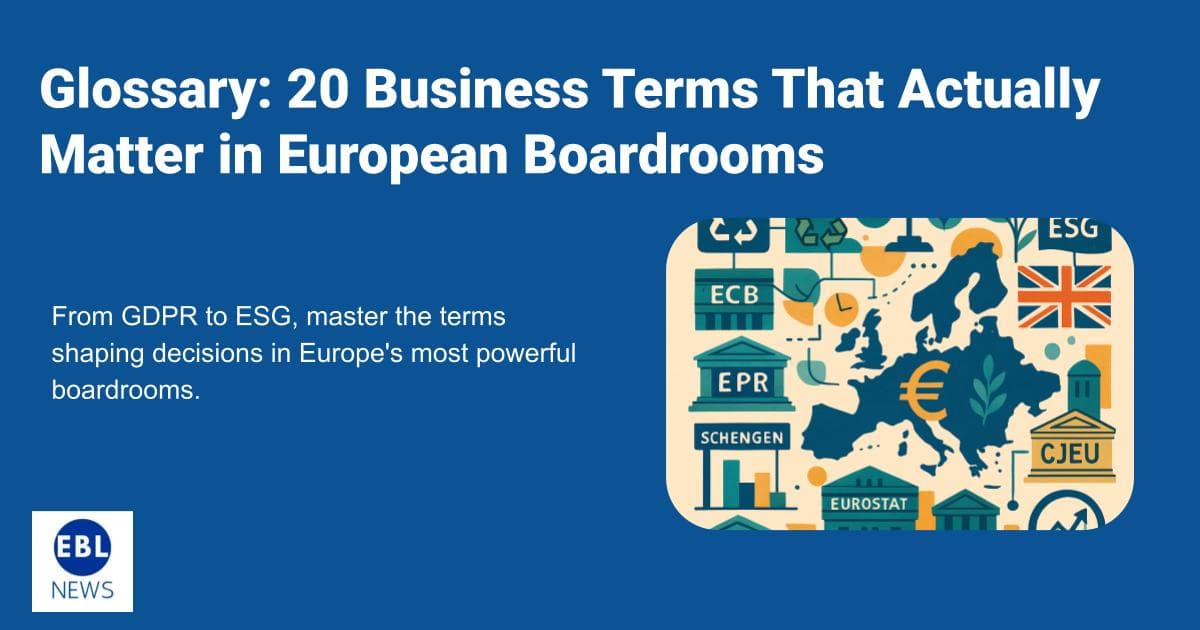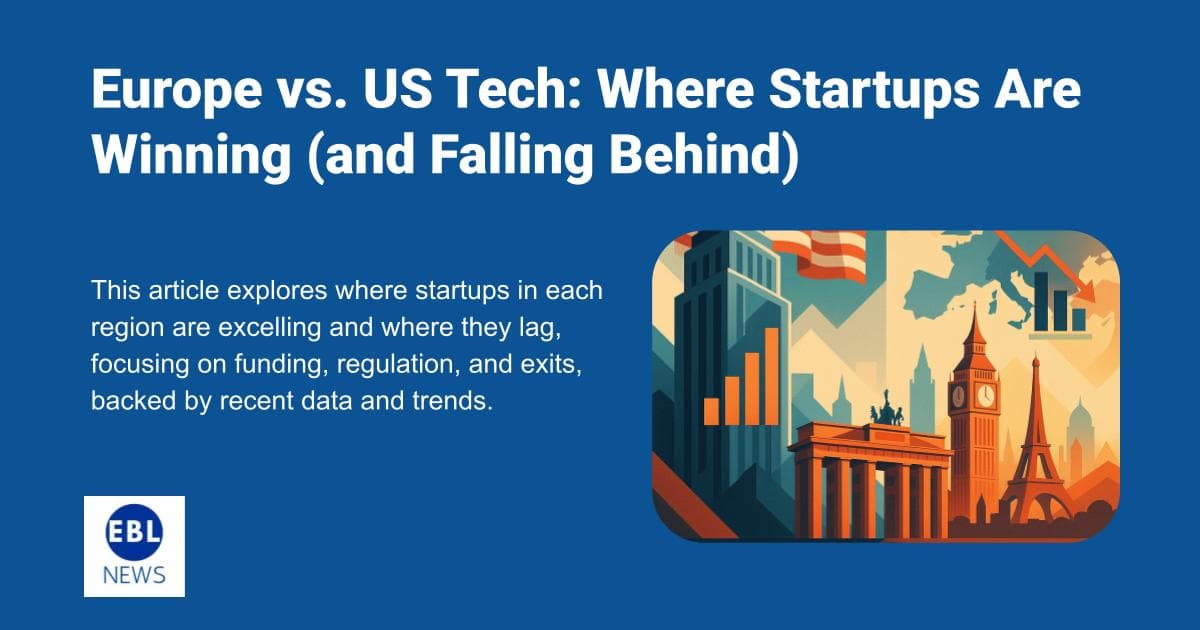Understanding the language of European business is essential for anyone navigating boardrooms across the continent. While buzzwords come and go, a core set of terms consistently shapes high-level decision-making in policy, finance, compliance, and strategy. This glossary breaks down 20 acronyms and concepts that actually matter—used by executives, regulators, and investors from Brussels to Berlin. Whether you're expanding into Europe or advising someone who is, this list will get you speaking the right language.
- GDPR (General Data Protection Regulation): EU regulation enforcing data protection and privacy for individuals, applicable to all companies processing EU residents' data.
- EPR (Extended Producer Responsibility): Environmental policy requiring producers to be responsible for the entire lifecycle of their products, especially for take-back, recycling, and final disposal.
- Single Market: An integrated market allowing free movement of goods, services, capital, and people within the EU.
- MiFID II (Markets in Financial Instruments Directive II): EU legislation that standardizes regulation for investment services across member states, enhancing investor protection.
- ESG (Environmental, Social, and Governance): Criteria used to evaluate a company's ethical impact and sustainability practices.
- ECB (European Central Bank): Central bank for the eurozone, responsible for monetary policy and maintaining price stability.
- Eurozone: Group of EU countries that have adopted the euro as their official currency.
- Brexit: The United Kingdom's withdrawal from the European Union, finalized in January 2020.
- EFTA (European Free Trade Association): Regional trade organization comprising Iceland, Liechtenstein, Norway, and Switzerland, promoting free trade and economic integration.
- Schengen Area: Zone comprising 27 European countries that have abolished passport and other types of border control at their mutual borders.
- CJEU (Court of Justice of the European Union): Ensures EU law is interpreted and applied uniformly across member states.
- Eurostat: Statistical office of the EU, providing statistical information to enable comparisons between countries and regions.
- ECB's TLTRO (Targeted Longer-Term Refinancing Operations): ECB's tool to provide long-term loans to banks to encourage lending to the real economy.
- Basel III: International regulatory framework to strengthen regulation, supervision, and risk management within the banking sector.
- CRD IV (Capital Requirements Directive IV): EU legislative package covering prudential rules for banks, including capital requirements and governance.
- EBA (European Banking Authority): EU agency that works to ensure effective and consistent prudential regulation and supervision across the European banking sector.
- Solvency II: EU directive that codifies and harmonizes the EU insurance regulation, primarily concerning the amount of capital that EU insurance companies must hold.
- AIFMD (Alternative Investment Fund Managers Directive): Regulates managers of hedge funds, private equity funds, and real estate funds within the EU.
- UCITS (Undertakings for the Collective Investment in Transferable Securities): Regulatory framework of the EU that creates a harmonized regime throughout Europe for the management and sale of mutual funds.
- EIOPA (European Insurance and Occupational Pensions Authority): EU agency that supports the stability of the financial system by ensuring the integrity, transparency, and efficiency of the insurance and pensions markets.
Conclusion
European business conversations are filled with references that assume familiarity with complex regulatory bodies, economic zones, and cross-border directives. By mastering the terms in this glossary, you’ll have a sharper grasp of the real frameworks shaping decisions in European boardrooms—no translation required. Keep this list handy as both a primer and a reference.





